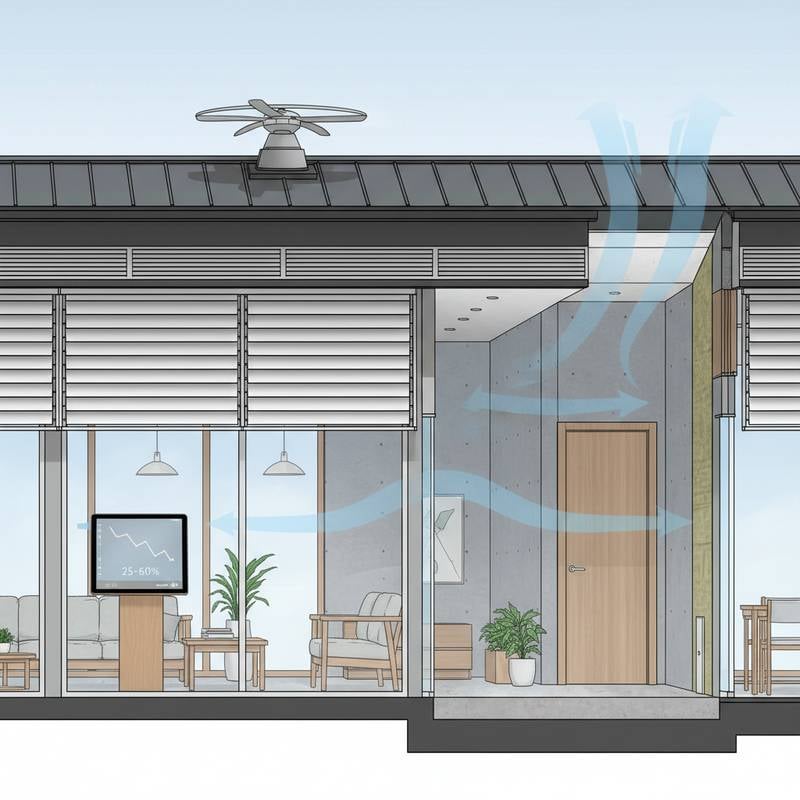Key Points
- Electric appliances eliminate combustion gases for superior indoor air quality
- Induction cooktops and heat pumps match or undercut gas costs through efficiency gains
- Utility rebates and reduced maintenance enhance the financial case for electric systems
- Access to reliable renewables bolsters long-term energy security
- Targeted electric upgrades boost property appeal and curb carbon footprints
The Shift in Home Energy Decisions
Picture entering a kitchen where an induction cooktop produces only a soft hum while boiling water in half the time. No odors, no pilot lights, and no excess warmth linger. Homeowners nationwide increasingly appreciate the tangible advantages of replacing gas appliances. This change stems from practical considerations of safety, ease, and finances, beyond mere ecological goals.
Discussions on home electrification have entered everyday renovation strategies from specialized green initiatives. For new constructions or updates, selecting electric over gas emerges as a prudent choice that yields returns in performance, well-being, and enduring worth.
Financial Advantages of Abandoning Gas
Natural gas long held the reputation as the premier choice for heating and cooking tasks. Promoted as superior to oil and quick in response, it dominated preferences. Contemporary electric innovations now surpass gas in affordability and functionality.
Initial Investments and Support Programs
Electric units might carry a modest premium at purchase, yet rebates and tax incentives frequently cover significant portions. Many utilities offer payments from several hundred to thousands of dollars for installing electric heat pumps or induction stoves.
Ongoing Expense Reductions
Heat pumps generate three to four units of warmth per unit of electricity used. Gas furnaces achieve roughly ninety percent fuel-to-heat conversion. This disparity accumulates into thousands of dollars saved over ten years.
Upkeep and Longevity
Fewer components in electric setups mean less frequent servicing and no combustion risks like carbon monoxide exposure. Owners avoid routine checks and premature replacements, rendering these options both secure and cost-effective.
Property Value and Buyer Interest
All-electric residences draw purchasers desiring minimal bills and pure interiors. Experts in real estate note that such enhancements can lift values by five to ten percent, varying by location and installation caliber.
Health and Ecological Benefits
Gas combustion releases nitrogen dioxide, carbon monoxide, and tiny particles each time a burner activates. These contaminants build up in sealed contemporary dwellings. Electric alternatives remove this risk entirely.
Purer Home Atmosphere
Individuals with asthma or breathing issues notice rapid improvements post-switch to electric methods. Research indicates gas stove use elevates nitrogen dioxide beyond external benchmarks during cooking sessions.
Lowered Carbon Output
Grids incorporating more renewables steadily cut emissions from household power. Substituting each gas unit with electric advances a home toward zero-carbon operations.
Enhanced Security
Absence of flames prevents leaks, blasts, or ignition sources. Electric configurations minimize fire threats, appealing to households and overseers of properties.
Induction Cooking: Revolutionizing Kitchen Tasks
Induction technology sparks enthusiasm among electric advancements by employing magnetic fields to warm pots directly. It offers immediate adjustments and exceptional velocity.
Superior Control and Speed
Induction boils water almost twice as quickly as gas while ensuring exact heat levels for simmering tasks like sauces or melting. Professional cooks value this agility, which frequently outpaces gas.
Optimized Energy Use
Ninety percent of induction energy reaches the cookware, unlike gas where nearly half dissipates into the room. This boosts speed and cools the cooking area faster.
Simplified Care
Surfaces remain cooler, so spills wipe away easily without baking on. This avoids the residue typical near gas flames.
Pricing Analysis
Basic induction models align with average gas prices. Factoring in aids and reduced runtime, recovery happens in three to five years.
Heat Pumps: Core of Efficient Climate Management
Heat pumps stand out for reliability and performance in regulating home temperatures. They move heat instead of creating it, accounting for high yields.
All-Season Functionality
A single heat pump handles warming and chilling, adjusting to weather shifts without dual equipment.
Performance Returns
Each dollar on power yields three to four in comfort value. Lifespan savings project twenty to forty percent returns.
Adaptable Installations
Full-duct setups fit comprehensive needs, while mini-splits serve expansions or aged structures sans ducts. Options span budgets and home styles.
Overcoming Typical Objections
Potential Electricity Price Increases?
Rates vary, but electric draws from varied supplies for steadier costs. Renewables expansion smooths seasonal variations.
Adequate Electrical Infrastructure?
Aged wiring may require panel enhancements, costing hundreds to thousands. Integrate into projects or claim offsets.
Performance in Harsh Winters?
Advanced models excel below freezing, with resistance backups for peaks.
Cookware Compatibility for Induction?
Stainless or iron pieces suit best; a magnet test confirms usability.
Implementing the Transition
Electrify gradually to manage expenses, disruption, and schedule.
Identify High-Impact Areas
Prioritize heating and hot water for maximum gains. An audit pinpoints focuses and forecasts yields.
Integrate with Existing Work
During kitchen overhauls, add induction and vents together. For HVAC swaps, assess power and explore batteries or solar additions.
Realizing Lasting Home Benefits
Electrification transforms residences into efficient, healthful sanctuaries. Savings accrue steadily, safety elevates daily life, and values rise with market trends. Embrace these upgrades to secure a resilient, forward-looking home environment that aligns with personal and planetary priorities.










